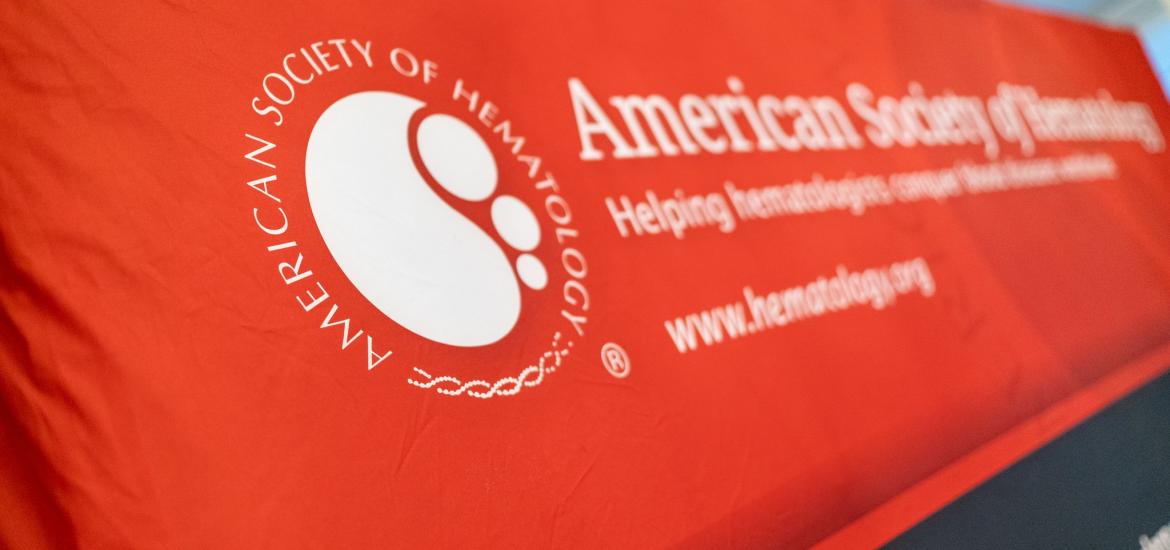
ASH 2023 – a new EZ battle shapes up
Daiichi aims to expand valemetostat into a new use, but Haihe Biopharma isn't far behind.
Daiichi aims to expand valemetostat into a new use, but Haihe Biopharma isn't far behind.

EZH2 inhibitors have seen some success, but several companies are hoping to improve on their efficacy with a dual approach targeting EZH1 and 2. Two such groups, Daiichi Sankyo and Haihe Biopharma, presented data at ASH on Saturday in peripheral T-cell lymphoma (PTCL), allowing a handy cross-trial comparison of the agents in question.
Daiichi's valemetostat is further ahead, having already been approved in Japan in a related disease, but Haihe's HH2853 looks like it might have an efficacy edge – with the caveat that data with the latter came from a small Chinese trial, versus Daiichi’s much larger global phase 2 study.
EZH2 is overexpressed in PTCL, hence the investigation of these projects for this use. It's hoped that EZH1/2 inhibitors could be more potent than EZH2 blockers such as Ipsen's Tazverik, which is FDA-approved for epithelioid sarcoma and follicular lymphoma.
PTCL race
Daiichi’s valemetostat was approved in Japan in 2022 for adult T-cell leukaemia/lymphoma, where it is branded Ezharmia.
In PTCL, the drug is being tested in the global phase 2 Valentine-PTCL01 study; data were presented at ASH on Saturday came from 133 patients. Meanwhile, the conference saw data from 37 patients in a Chinese phase 1 study of Haihe’s HH2853.
Both trials enrolled patients with a median of two prior lines of therapy, so overall response rates of 44-65% look respectable, and in line with results with Dizal's JAK1 inhibitor golidocitinib in PTCL, also presented at ASH.
Cross-trial comparison of EZH1/2 inhibitors at ASH 2023
| Company | Daiichi Sankyo | Haihe Biopharma |
|---|---|---|
| Project | Valemetostat | HH2853 |
| Trial | Ph2 Valentine-PTCL01 | China ph1b (CTR20221416) |
| Data cutoff | 5 May 2023 | 15 Aug 2023 |
| ORR | 44% (52/119) | 65% (22/34) |
| CR | 14% (17/119) | 27% (9/34) |
| mPFS | 5.5 months | Not reached |
| ≥Gr3 TRAEs | 37% | 35% |
| TRAE leading to discontinuation | 7% | 3% |
| TRAE leading to death | 0% | 3% |
Source: ASH 2023.
On the face of it HH2853 looks slightly better than valemetostat, but as usual cross-trial comparisons should be treated with caution, especially given the relative sizes of the two studies, and the fact that both are uncontrolled.
Rates of severe treatment-related adverse events and discontinuations could be something to keep an eye on in future, with thrombocytopenia, anaemia and diarrhoea seen. There was also one treatment-related death with HH2853, in a patient who previously had thrombocytopenia rated grade 4.
Daiichi is planning a supplemental filing for valemetostat in Japan by the end of this fiscal year, while a phase 2 single-arm study of HH2853 in PTCL is ongoing.
PTCL is a rare and aggressive group of blood cancers that account for around 10% of non-Hodgkin’s lymphomas in western countries, rising to 20% in Asia. There is no standard therapy; common treatments include chemo and radiotherapy, and progression-free survival with current approaches is around three to four months.
As well as PTCL, valemetostat trials are under way in various indications including B-cell lymphoma and head and neck cancer.
EZH1/2 inhibitors in development
| Project | Company | Trial | Note |
|---|---|---|---|
| Valemetostat | Daiichi Sankyo | Global ph2 Valentine-PTCL01 in median 3rd-line PTCL | Data at ASH 2023 |
| HH2853 | Haihe Biopharma | Global ph1/2 in NHL & solid tumours; ph1b (CTR20221416) China trial in median 3rd-line PTCL | PTCL data at ASH 2023 |
| Tulmimetostat | MorphoSys | Global ph1/2 in solid tumours & lymphoma | Data at ASCO 2023; has BTD in ARID1Am 2L+ endometrial cancer |
| HM97662 | Hanmi Pharmaceutical | Ph1 in Australia & S Korea, completes Feb 2025 | Preclinical data presented at AACR 2023 |
| DW91170 | Dong Wha | NA | Preclinical data presented at AACR 2023 |
Source: OncologyPipeline.
1383













